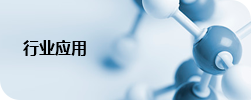是否有必要检测纯化水中的内毒素?
发布时间:2024-11-18 浏览次数:100
从满足药典要求以及成本角度而言,肯定是没有必要的。从风险角度而言,可以探讨一下, 以下是ECA网站关于这个话题的讨论。
When planning new purified water (PW) systems, the question arises as part of the risk analysis or later, when drawing up the qualification and sampling plans as to whether endotoxins should be tested for.
当规划新的纯化水(PW)系统时,当制定确认和取样计划时,作为风险分析的一部分或稍后行动,关于是否应该检测内毒素的问题就会出现。
According to the specifications of the pharmacopoeias (e.g. USP or Ph.Eur.), endotoxin testing is not required for Purified Water. The endotoxin content is not a test parameter in the valid pharmacopoeia monographs for purified water.
根据药典规范(如USP或EP),纯化水不需要内毒素检测。在现行的纯化水药典各论中,内毒素含量没有作为检验参数。(博主注:2020版中国药典第二部中,纯化水各论也未要求检测内毒素。)
However, if purified water is used as feed water for distillation plants and pure steam generators for the production of WFI (water for injection) or pure steam, it may be useful to test for endotoxins as part of the qualification process. This is due to the fact that distillation systems and pure steam generators - depending on the technology and manufacturer - can only achieve a reduction of 3 to 6 log levels of endotoxins.
但是,如果使用纯化水作为蒸馏装置的给水和用于生产WFI(注射用水)或纯蒸汽的纯蒸汽发生器的给水,则作为水系统确认过程的一部分,内毒素测试可能是有用的。这是由于蒸馏系统和纯蒸汽发生器(取决于技术和生产商)只能将内毒素降低3到6 log水平。
For the validation of the water system, the performance of the purification process must be proven. This applies to all quality parameters, including the endotoxin content in the WFI. However, such validation is only possible if the initial concentration of a contaminant is known.
为了验证水系统,必须证明纯化水工艺的性能。这适用于所有质量参数,包括WFI中的内毒素含量。然而,只有在污染物的初始浓度已知的情况下,这样的验证才有可能。
Many operations with PW and WFI systems do not measure endotoxins in PW as part of routine sampling. Instead, endotoxins are measured in the WFI, where there are usually values below the detection limit (<0.06 IU/ml). However, some companies consider these random sample measurements in the WFI to be insufficient. If endotoxin values above the detection limit (0.06 IU/ml) but below the pharmacopoeia limit for WFI (0.25 IU/ml) are occasionally found, it is necessary to analyse the cause as part of the trend evaluation. For this reason, some sites have included the measurement of endotoxins in their sampling plans for PW for information purposes.
许多使用纯化水和注射用水系统的操作不将纯化水中的内毒素作为常规取样监测的一部分。通常,内毒素是在注射用水中检测的,其值通常低于检测限(<0.06 IU/ml)。然而,一些公司认为注射用水中的这些随机样本检测是不够的。如果偶尔发现内毒素值高于检测限(0.06 IU/ml),但低于药典注射用水限值(0.25 IU/ml),则有必要分析原因,作为趋势评估的一部分。出于这个原因,一些工厂在纯化水的取样计划中包含了内毒素的测量,以提供信息。
PW systems with membrane technology generally have endotoxin levels below the pharmacopoeia limit for WFI (0.25 IU/ml). However, PW systems without membrane technology, especially older, poorly flowingdeionized water systems (with anion and cation exchangers), can have values significantly above the pharmacopoeia limit.
采用膜技术的纯化水系统的内毒素水平通常低于药典对注射用水的限值(0.25 IU/ml)。然而,没有膜技术的纯化水系统,特别是较老的、流动性差的去离子水系统(带有阴离子和阳离子交换剂),其值可能大大超过药典限值。
There are also applications of purified water in the biotechnology sector in which endotoxins can play a role, for example in the fermentation process or during purification. In such cases, purified water should also be tested for endotoxins.
纯化水在生物技术领域也有应用,其中内毒素可以发挥作用,例如在发酵过程或净化过程中。在这种情况下,纯化水也应检测内毒素。
A 'mini-risk analysis' is recommended here to clarify two questions:
这里建议进行“迷你风险分析”,以澄清两个问题:
— What is the purified water used for?
— 纯化水是做什么用的?
— In which cases could endotoxins be problematic?
— 在哪些情况下内毒素会有问题?
Based on these answers, the necessity of testing for endotoxins can then be concluded and, if necessary, alarm and limit values as well as specifications for the test interval can be defined.
根据这些答案,可以得出内毒素检测的必要性,如果有必要,可以定义报警值和限值以及检测间隔的标准。
文章来源:环凯转载于“药物微生物检验”公众号,文章来源于ECA网站;
转载声明:本文为转载发布,仅代表原作者或原平台态度,不代表我方观点。环凯仅提供信息发布平台,文章或有适当删改。对转载有异议和删稿要求的原著方,可联络站点客服。





